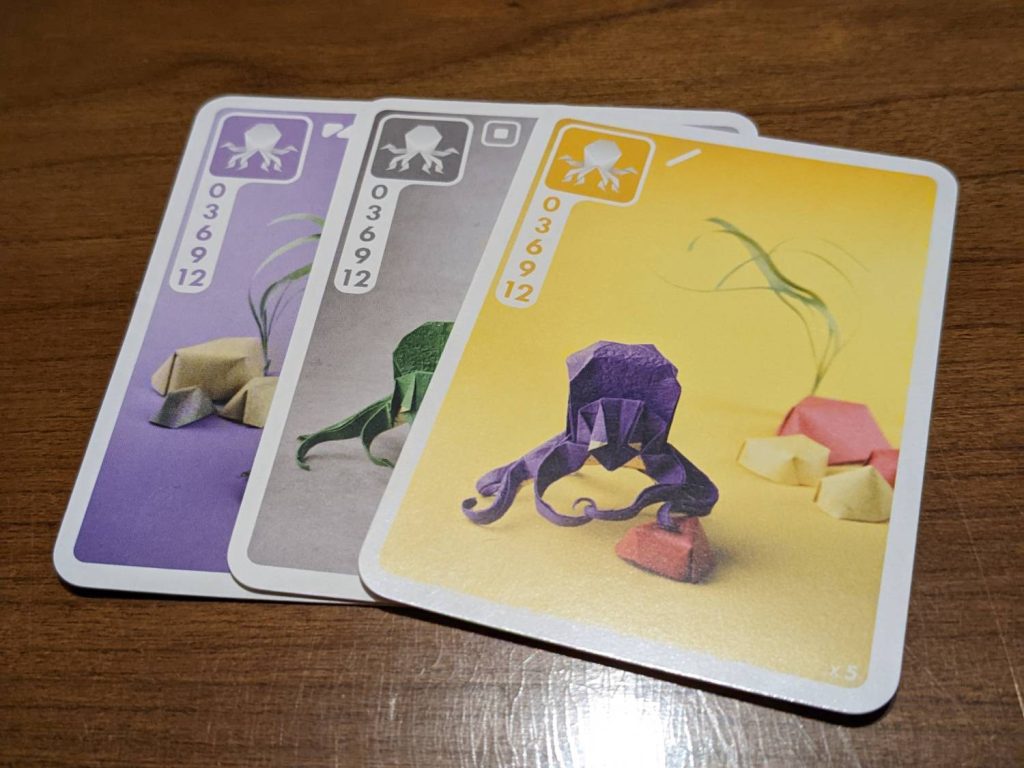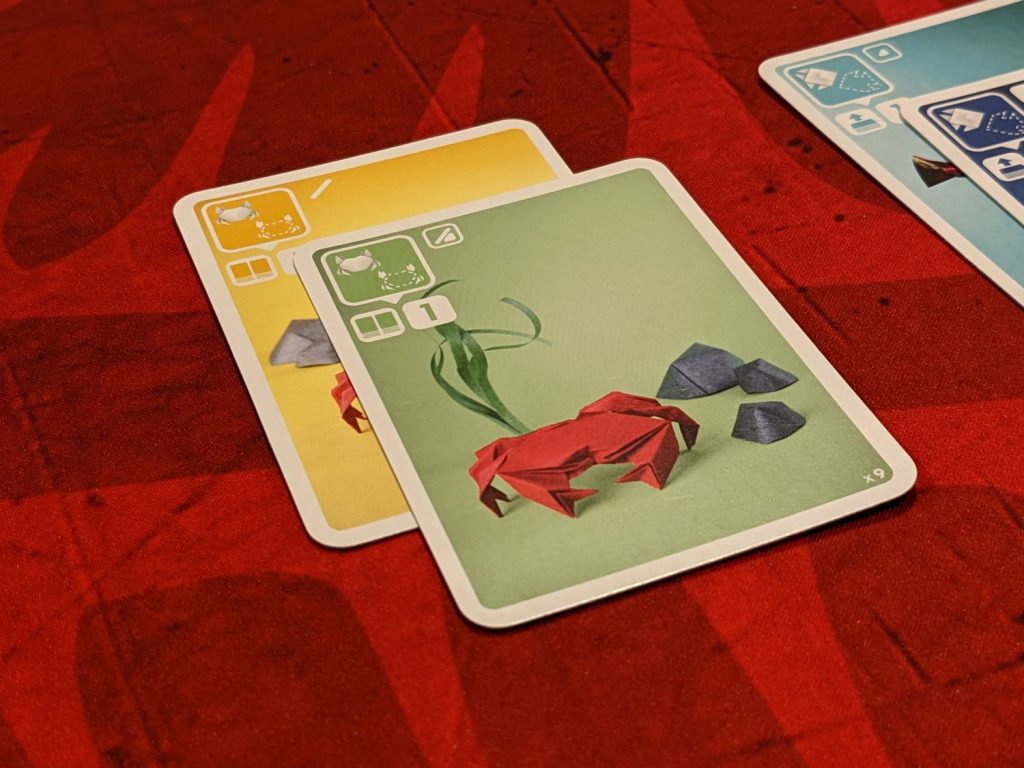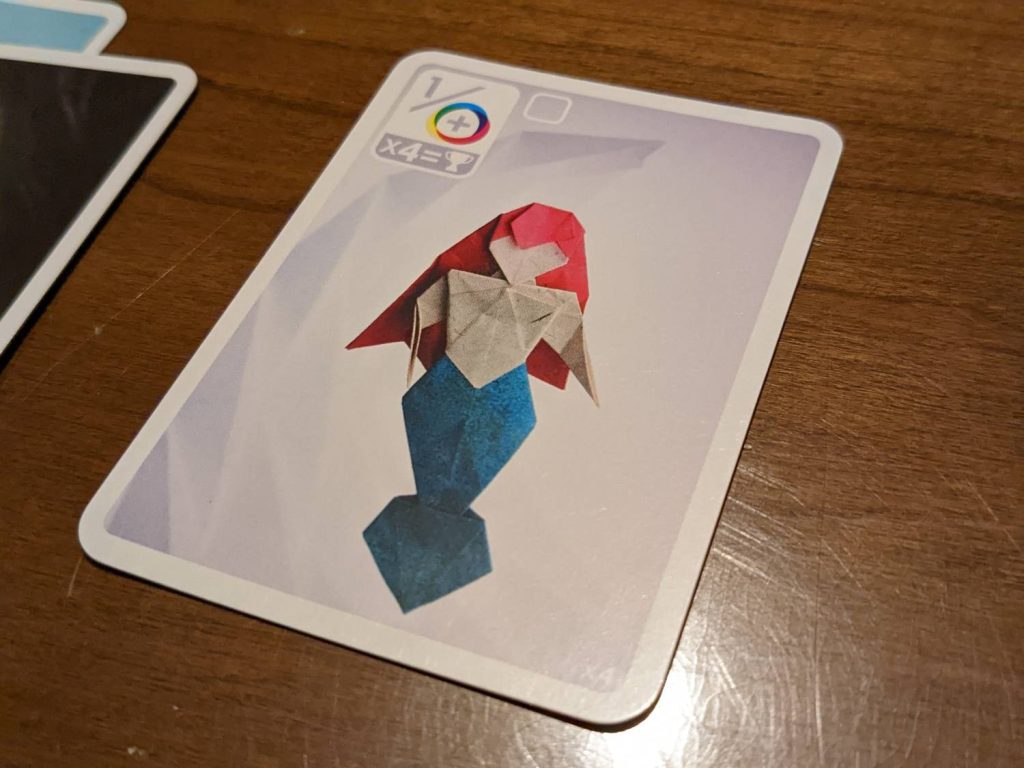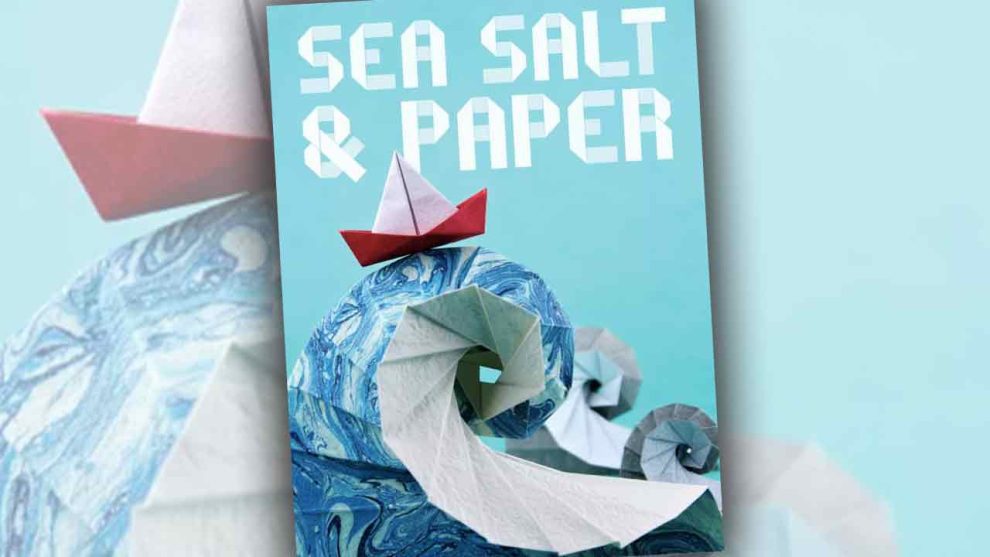I never quite got the fascination with origami, the Japanese art of folding paper into decorative figures. The only art I ever built out of folded paper as a kid was a paper airplane, that would then be trampled by other kids at school when I would try to fly it out into the world.
But I always enjoyed pictures of origami—and for the first time, I played a game that featured origami: Sea Salt & Paper (2022, Bombyx), a card game with some of the coolest pictures in a game I’ve played this year.
Although origami is featured in the cards, Sea Salt & Paper is a simple collection game. The game lands very well as a family activity because it plays with all ages, but it overstays its welcome just a tad thanks to its scoring mechanic.

Those Cards!
Designers Bruno Cathala (7 Wonders Duel, Five Tribes, Kingdomino) and Théo Rivière (The Loop, Draftosaurus) worked with origamists Lucien Derainne and Pierre-Yves Gallard to build the production behind Sea Salt & Paper. The art is the main attraction, but ultimately, we’re here to play a game with a minor element of push-your-luck as scores are tabulated at the end of each round.
On a turn, players draw either two cards from a central deck, keeping one in their hand and discarding the other, or drawing and keeping one card from a choice of the two available discard piles. The cards, which come in a mix of different colors, come with actions in a few varieties: set collection scoring cards known as collector cards; point multipliers; mermaid cards (which score points for the most of a single color in your hand); and duos. Duo cards come in suits that show an icon, like boats, fish, or crabs.
After adding a card to their hand, a player can then play any sets of duo cards to the table. Each set of two cards is worth one point, but also grants a one-time power: stealing a card from another player; taking another turn right away; drawing a card from the top of the deck; or drawing a card from one of the discard piles. At the end of a turn where the active player has 7+ points, they have a choice: stop the round, and allow everyone to score points right away, or push their luck by announcing “Last Chance.”
In the case of a Last Chance, all players get one more turn to maximize their scoring before all players reveal their total round score. If the Last Chance instigator has outscored the table, they get to score their entire total, plus a bonus score of one point per color card of the color most prevalent in their hand plus tableau. If the instigator loses that bet, all other players score their hand and the instigator only scores the color bonus.
The 58-card deck features lots of ways to score. Catching and holding as many of one color as possible is a good strategy as soon as you have a mermaid card, because mermaids score a point for each of the most prevalent color in your possession (hand plus played cards). Some of the collector cards stack nicely if you are the only player going after a set of shells or octopus cards. Some cards are a risk, like the sailor cards: you score zero points if you have one, but if you have both, that will net you five points. (This feels a little like some of the collection strategies in Sushi Go! Party.)
The game ends when one player reaches a specific point threshold (based on player count), or if any single player is able to grab all four mermaid cards in a single round. In the case of the latter, that player automatically wins. (I’ve not seen this, so I think it will be rare because if a player can get a mermaid card, they are usually going to keep it!)

One Round Too Many, and a Note About Player Count
Sea Salt & Paper’s turn-to-turn interactions are great. Since you don’t always have a sense of how long a round will go, there’s a nice tension as players try to build sets to score their 7+ points to end a round. Every point matters in Sea Salt & Paper, so even when you can grab a one-point penguin card from a discard pile, you are probably going to do it—what if someone else ends the round on their next turn?
One of the few stumbling blocks in Sea Salt & Paper is the iconography, in part because of how the duo sets are drawn. This caused some interesting problems during my family games. The icons looked fine to me, as I needed two crab duo cards to form a set, but the outline of a crab on one half of the icon made some players think that they needed a full crab on the matching half. This is hard to describe in writing, so I can see why this is a struggle. I just wish that this icon was drawn differently.
The other issue in my four plays (all with exactly three players) is the time commitment. Sea Salt & Paper’s lighter ruleset and turn structure should lead to a game that lasts 15-20 minutes, especially with two or three players. In my experience, games run 30-40 minutes quite easily, especially considering how long some rounds will go as players try to get more points. The rules try to combat this with a “special case” warning: if the draw deck ever empties on a player’s turn, the entire round is canceled, with no scoring taking place.
But that won’t stop rounds from taking a little too long. In a two-player game, the scoring threshold is 40 points. That could take three rounds, it could take six rounds, it might take more. Early-round turns are quick, because you’re not sure which sets you should be focused on. Later, you’ll spend a little time staring at each discard pile to get a feel for which sets you should pursue and which ones you want to ensure your opponents can’t pursue. (Hate drafting is real.)

A couple of other issues will surface in a two-player game. One of those is more pronounced at lower player counts: the runaway leader problem. If you win a couple of last chance rounds early on, you might be ahead 20-4. Depending on the card draw, the player with the lead is very likely going to yell “stop” whenever they get to seven points to ensure they keep all seven of those points. The player behind will have to go “last chance” every round to catch up, no matter how well the cards are shaking out.
The other one is minor, but still an issue: the swimmer/shark duo cards allow you to steal one card from another player. However, when a player declares “last chance”, that person can no longer be robbed. In a two-player game, this becomes a nice protection tactic, but also hurts the other player because there is no one else at the table to rob. (In a four-player game, you can still rob any other player who didn’t call the “last chance.”)
The best thing about Sea Salt & Paper are the beautiful cards—that, plus a price in the $10 range and a box that can be stuffed in a jacket pocket, make this a fine holiday gift for a gamer. I wish the icons made for a more accessible teach for someone new to card games more complex than Old Maid, but for gamers looking for a long filler, you’ll be in good shape with Sea Salt & Paper. And, great news: this one is available on Board Game Arena, so you can always try before you buy.











Add Comment